Houseplants have become a staple in most homes in recent years, and for good reason—they provide a touch of green, filter the air, and are a unique-looking (and living) piece of decor. But if you’re looking to grow some houseplants that are different than the rest, turn your attention to pink houseplants.
These vibrant flora are often cultivars of the houseplants you know and love, like philodendron or prayer plants, but with an added, colorful twist—they’re pink. Keep reading to learn about some of our favorite pink houseplants.
Chinese Evergreen
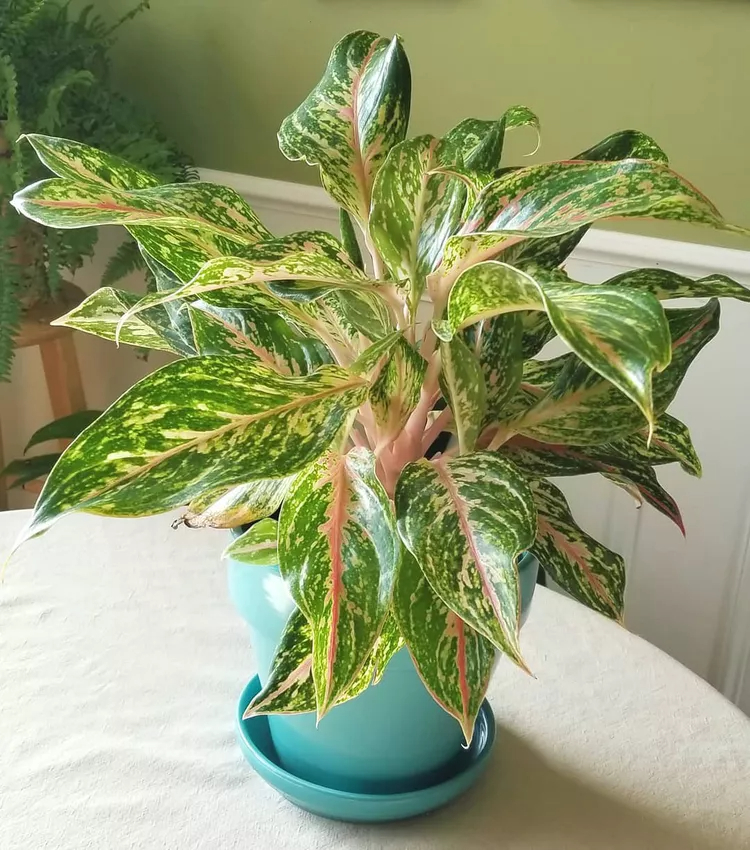
- Botanical Name: Aglaonema
- Sun Exposure: Indirect sunlight or fluorescent light
- Soil Type: Moist and well-drained
- Soil pH: 5.5-6.5
Aglaonemas (also called Chinese evergreen) come from Asia and provide unique foliage to low-light spaces. They’re less fickle than other pink houseplants, and their low-light needs make them the perfect pop of pink and green in an office or other space with fluorescent lighting.
String of Hearts
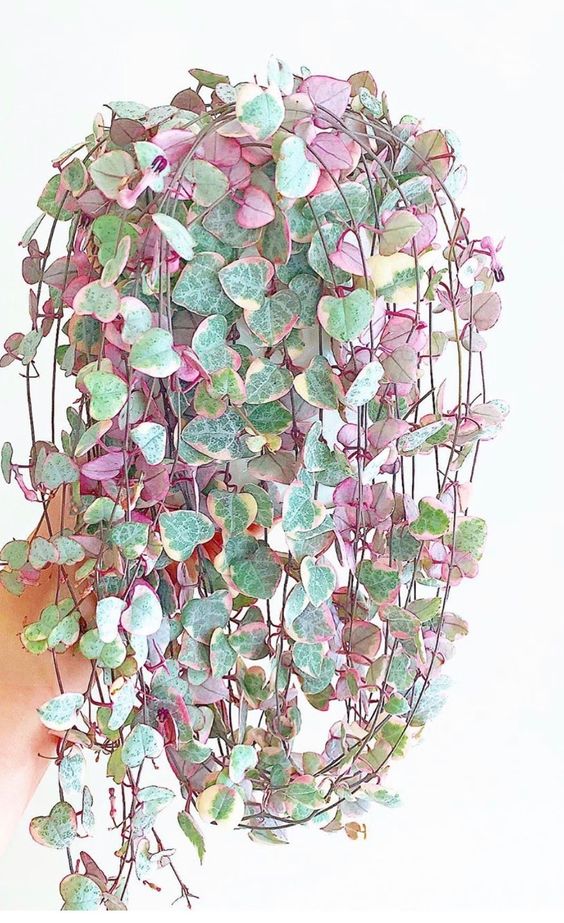
- Botanical Name: Ceropegia woodii
- Sun Exposure: Partial sunlight
- Soil Type: Well-drained cacti mix
- Soil pH: 6.5-7.5
String of hearts is a robust and easy-to-grow houseplant, making it a great pick for houseplant novices. Some varieties have pinkish-green leaves that add a touch of subtle color, and their vining qualities make them a great houseplant to hang.
Orchid
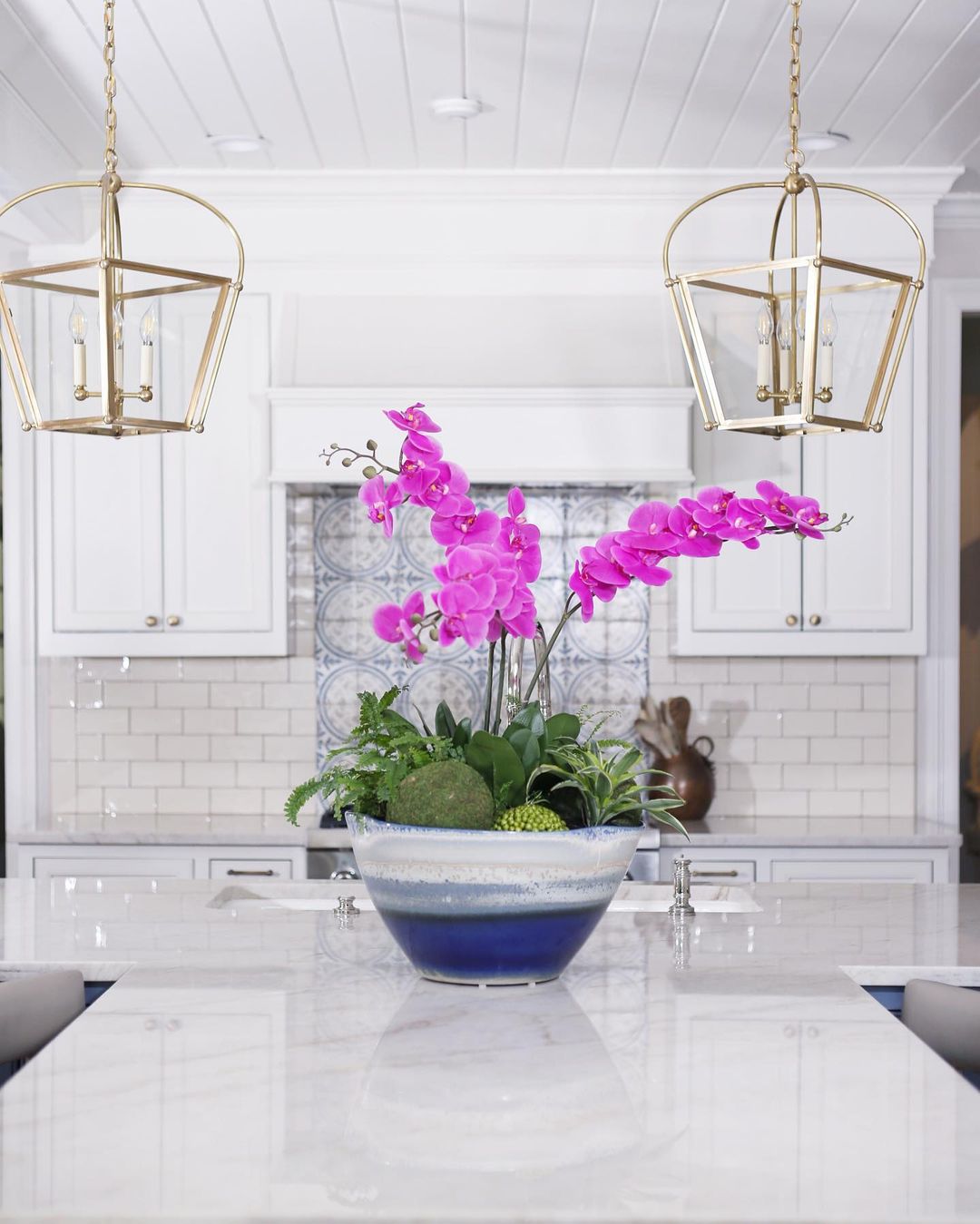
- Botanical Name: Orchidaceae
- Sun Exposure: Indirect and bright light
- Soil Type: Moss or bark mix
- Soil pH: 5.5-6.5
Orchids’ delicate look and beautiful blooms have made them a popular houseplant for decades. They come in a variety of colors including, of course, pink. The most popular pink orchids are the phalaenopsis, dendrobium, cymbidium and vanda cultivars. When taking care of orchids, it’s very important to remember that they need very little water—think occasional heavy waterings with long periods in between to let the soil dry out.
Prayer Plant

- Botanical Name: Calathea (Dottie)
- Sun Exposure: Partial sunlight to full shade
- Soil Type: Moist and well-drained
- Soil pH: 6.5
Like orchids, there are many pink calathea varieties too. Calatheas can be tricky to grow, as they prefer warm, humid air (think greenhouse temps year-round), but their beautiful foliage certainly makes it worth it.
Spiderwort

- Botanical Name: Tradescantia albiflora (nanouk)
- Sun Exposure: Partial shade
- Soil Type: Moist and well-drained
- Soil pH: 5.0-6.0
Tradescantia (nanouk), also called spiderwort, is a hardy houseplant that’s practically bursting with beautiful pink coloring. As this tropical plant loves warm and humid environments (and doesn’t require much sunlight), consider keeping it in your bathroom.
Bloodleaf
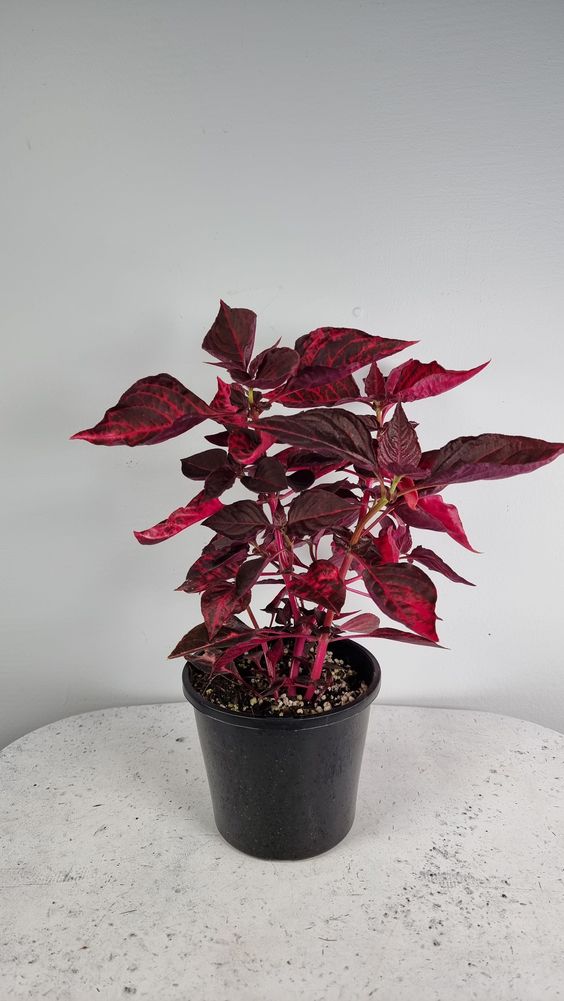
- Botanical Name: Iresine herbstii brilliantissima
- Sun Exposure: Bright sunlight
- Soil Type: Rich and well-drained
- Soil pH: 5.5-6.0
The richly colored bloodleaf plant stands out with its deep red and pink hues. Though bloodleafs do best in bright light, they can also be grown in shadier spaces, but their coloring will be less vibrant. Bloodleaf plants do produce flowers, but these buds should be removed, as they are often considered unattractive and take away energy from the foliage.
Black Lipstick Calathea
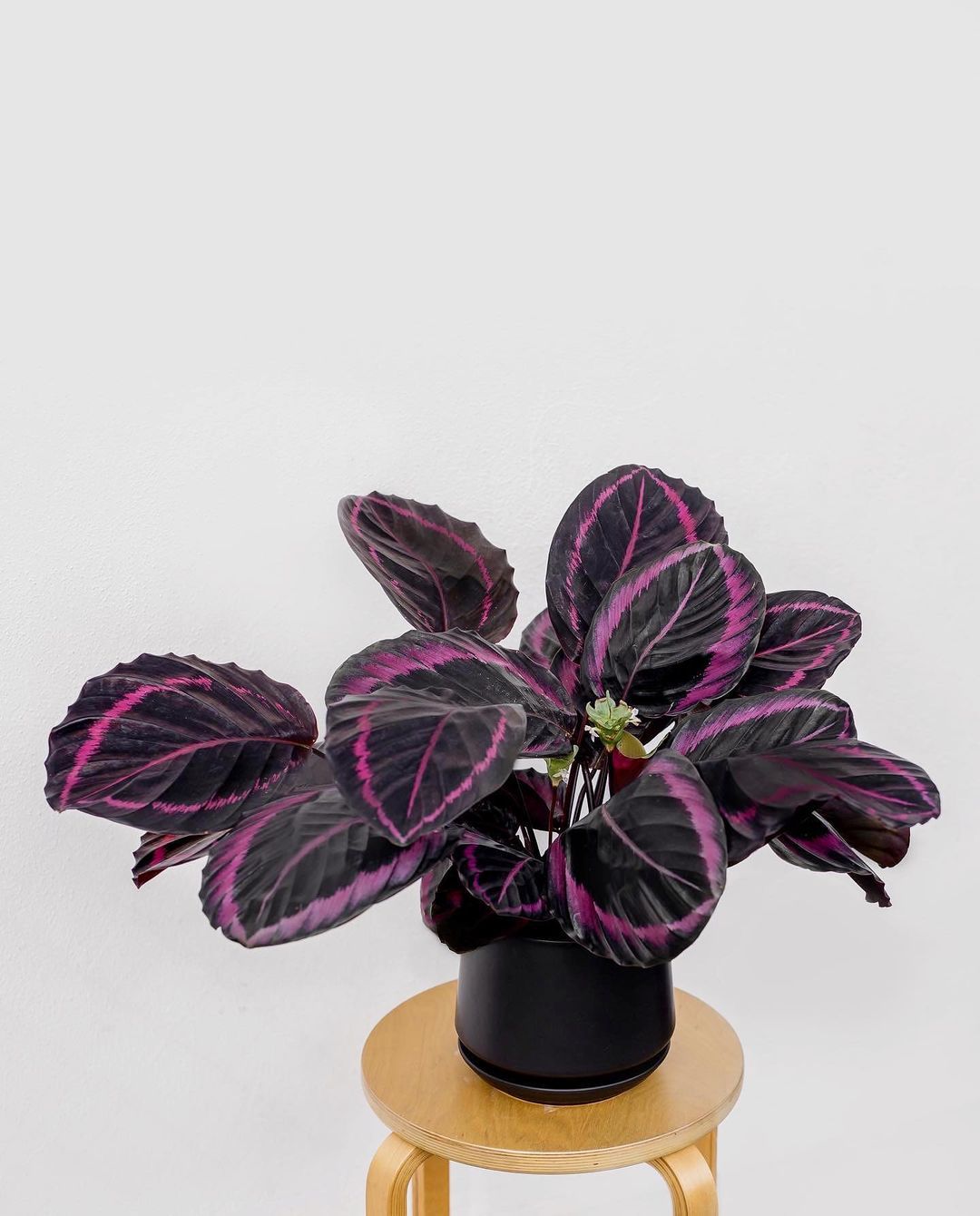
- Botanical Name: Calathea (black lipstick)
- Sun Exposure: Partial sunlight to full shade
- Soil Type: Moist and well-drained
- Soil pH: 6.5
This larger-than-life calathea is a showstopper in any room. Its oversized foliage and rich coloring makes it the statement plant your home has been looking for. For the warm and moist growing environment a calathea needs year-round, consider a terrarium.
Pink Splash Aglaonema

- Botanical Name: Aglaonema (Pink Splash)
- Sun Exposure: Indirect sunlight
- Soil Type: Moist and well-drained
- Soil pH: 5.5-6.5
Aglaonema (Pink Splash) has more of a vibrant color than the similar Chinese evergreen, but this richer pink means it needs more light than a Chinese evergreen too. This houseplant does best if it’s placed within six feet of a window and watered frequently.
Polka Dot Plant
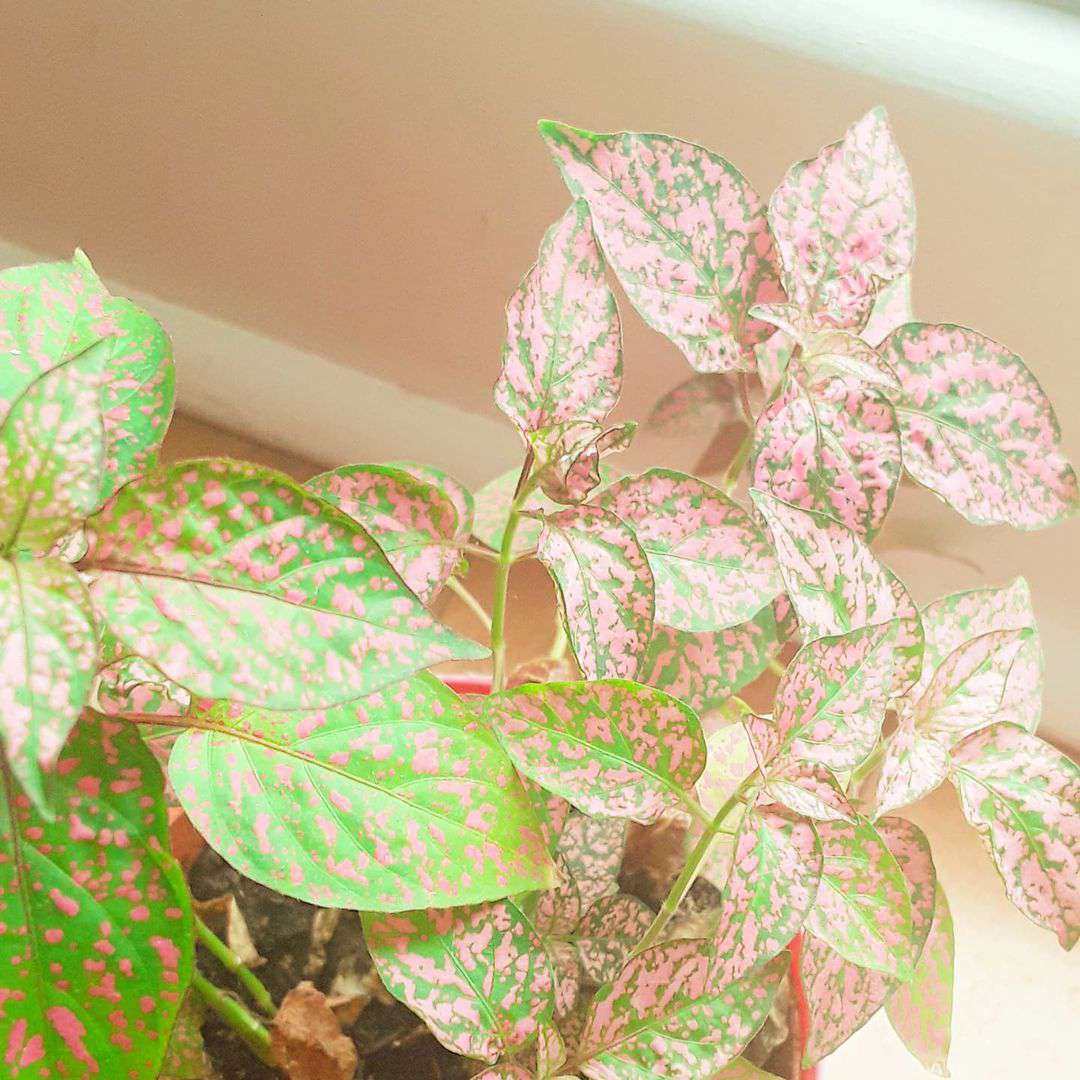
- Botanical Name: Hypoestes phyllostachya (pink brocade)
- Sun Exposure: Partial sunlight
- Soil Type: Moist and well-drained
- Soil pH: 5.5-6.5
The sweetly named polka dot plant comes in a variety of colors, with each having the plant’s signature spotted and splotched look. One popular variety is (Pink Brocade), which features delicate spots and dots of dusty pink. Keep this houseplant out of direct sunlight, as bright light can make its color fade.
Pink Princess Philodendron

- Botanical Name: Philodendron erubescens (pink princess)
- Sun Exposure: Partial sunlight
- Soil Type: Loamy
- Soil pH: 5.5-6.5
This perfectly-pink (and popular) take on the classic philodendron houseplant is sure to be a winner in any home. For plenty of color and variegation, ensure your philodendron has enough light—too much shade can make its colorful leaves turn back to green.
 pyomn
pyomn



